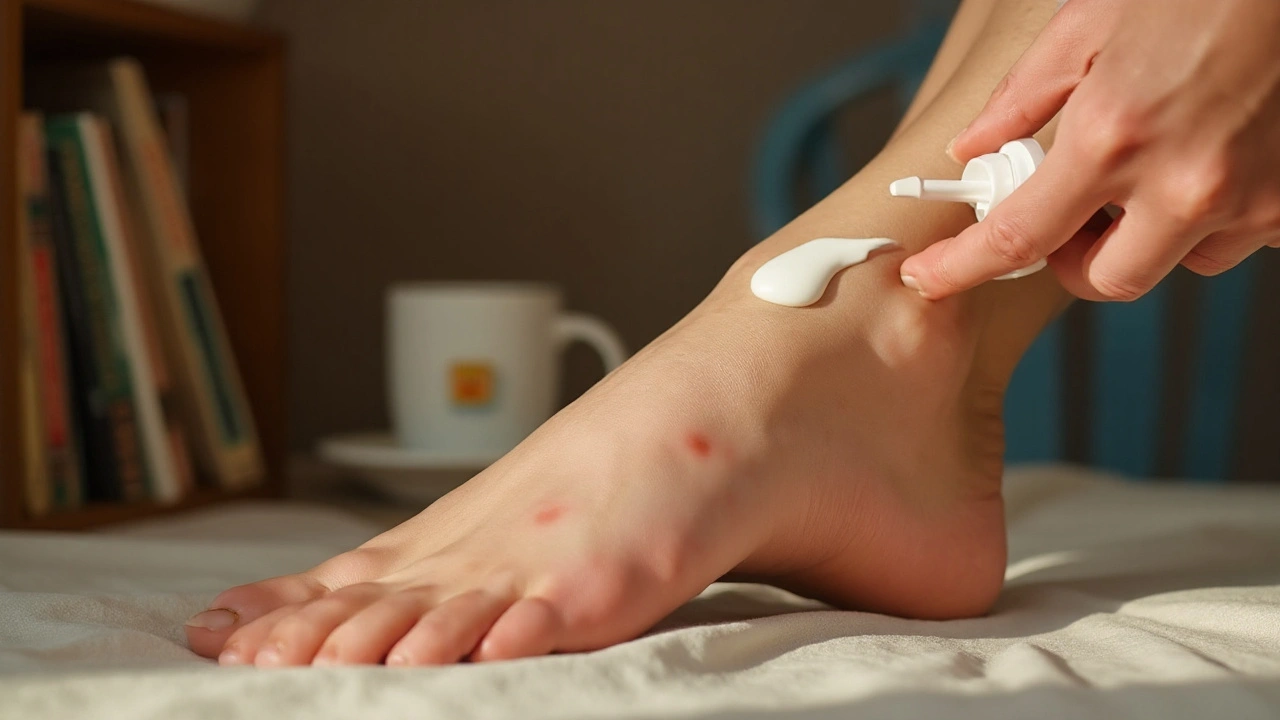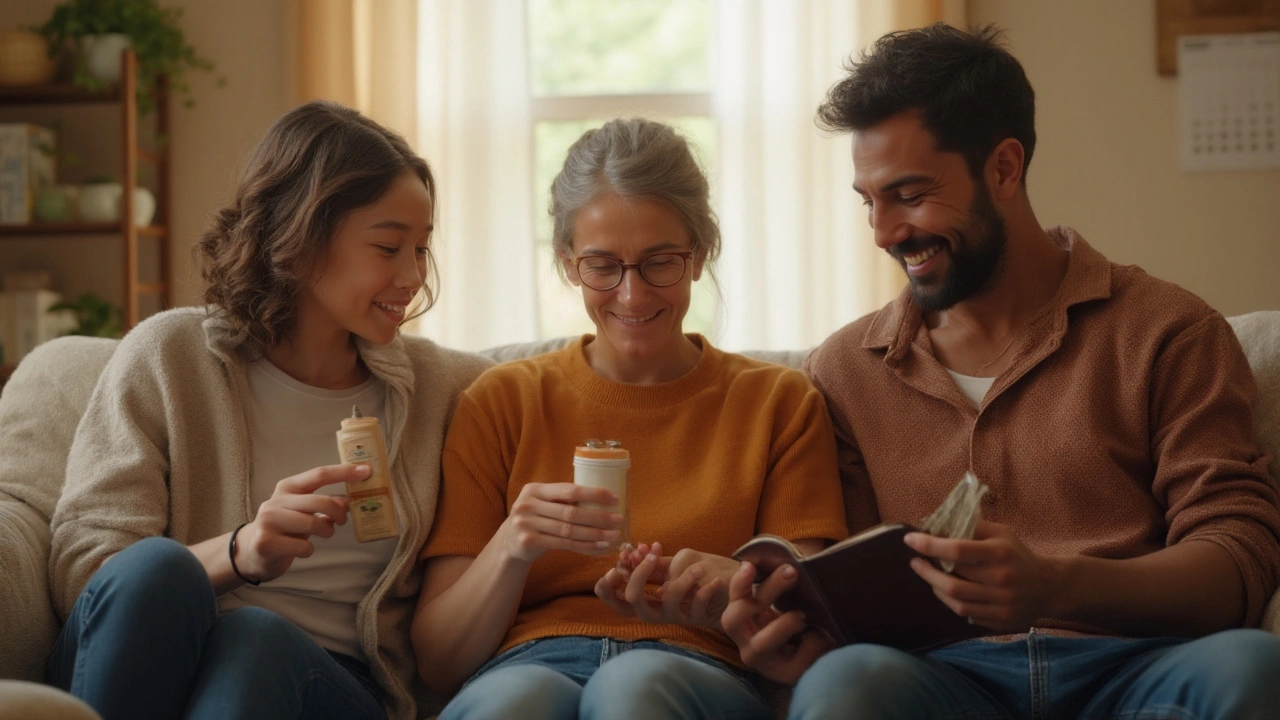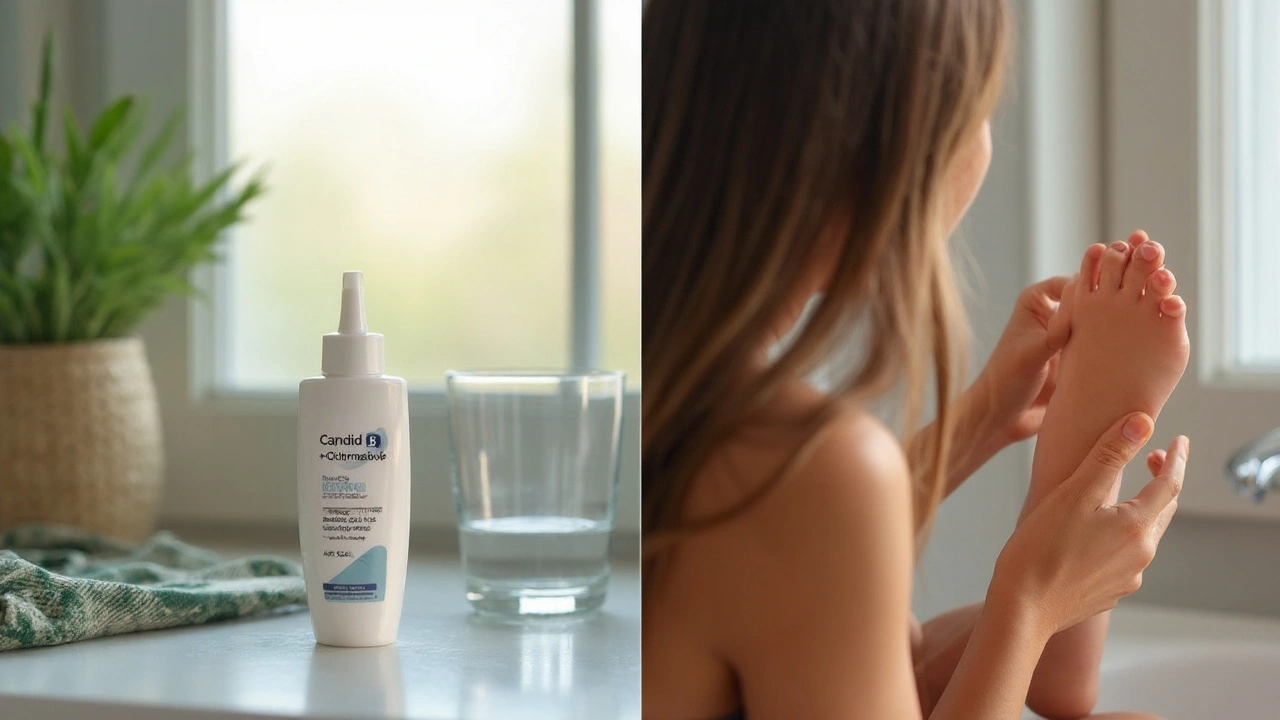Antifungal‑Steroid Cream Selector
Candid B Lotion is a prescription‑only topical cream that combines the corticosteroid beclometasone dipropionate with the antifungal clotrimazole. It’s marketed for inflammatory skin conditions that are complicated by a fungal infection, such as candidal‑associated dermatitis or tineawith an inflammatory flare‑up. When a patient presents with red, itchy patches that also show signs of yeast or dermatophyte growth, clinicians often reach for a combo product to tackle both problems in one step. But CandidB isn’t the only option on the shelf, and the right choice depends on potency, safety profile, cost and how the infection behaves. This guide walks you through the chemistry, the clinical scenarios, and the price‑point trade‑offs so you can decide whether CandidB is the best fit or if an alternative cream might serve you better.
How Candid B Lotion Works: Active Ingredients Explained
The magic of CandidB lies in its two active components.
- Beclometasone dipropionate is a medium‑potency glucocorticoid that reduces inflammation, swelling and itching by suppressing the body’s immune response at the skin level. It’s stronger than hydrocortisone but milder than betamethasone, making it suitable for short‑term use on delicate areas like the groin or armpits.
- Clotrimazole is a broad‑spectrum azole antifungal that disrupts fungal cell membrane synthesis, effectively killing yeasts and dermatophytes. It covers common culprits such as Candida albicans and Trichophyton rubrum.
By delivering both actions simultaneously, CandidB aims to calm the rash while eradicating the underlying fungus, often shortening treatment time to 1-2weeks compared with using two separate products.
When to Choose Candid B Lotion
Typical indications include:
- Intertriginous candidiasis (heat‑rash areas with yeast overgrowth)
- Acute inflammatory tinea (e.g., athlete’s foot with severe erythema)
- Dermatitis that has become secondarily infected with fungi
Recommended dosing is a thin layer applied twice daily to the affected area, washing hands before and after. Most clinicians advise a maximum of 2weeks of continuous use to avoid steroid‑related side effects.
Key Alternatives on the Market
Several other combo creams target the same niche. Below are the most common ones you’ll encounter:
- Lotrisone - betamethasone dipropionate (a high‑potency steroid) plus clotrimazole. It’s often chosen for tougher, thickened plaques.
- Nizoral Cream - ketoconazole 2% without any steroid. Best for pure fungal infections where inflammation is mild.
- Lamisil Cream - terbinafine 1% (allylamine class) also steroid‑free, preferred for dermatophyte‑only infections.
- Miconazole Cream - miconazole nitrate 2% with optional low‑dose hydrocortisone in some formulations (e.g., Miconazlite). It offers a gentle anti‑inflammatory effect.
- Hydrocortisone‑Antifungal Mix - over‑the‑counter (OTC) products that pair 1% hydrocortisone with a modest antifungal like clotrimazole. Suitable for mild cases.
Side‑by‑Side Comparison
| Product | Steroid Strength | Antifungal Agent | Typical Indication | Prescription/OTC |
|---|---|---|---|---|
| Candid B Lotion | Medium (beclometasone 0.05%) | Clotrimazole 1% | Inflammatory candidiasis & tinea | Prescription |
| Lotrisone | High (betamethasone 0.05%) | Clotrimazole 1% | Thick, hyperkeratotic fungal plaques | Prescription |
| Nizoral Cream | None | Ketoconazole 2% | Pure fungal infections, mild inflammation | Prescription (some OTC locales) |
| Lamisil Cream | None | Terbinafine 1% | Dermatophyte‑only tinea | Prescription (OTC in limited markets) |
| Miconazole‑Hydrocortisone | Low (hydrocortisone 1%) | Miconazole 2% | Mild fungal‑related dermatitis | OTC |
| Hydrocortisone‑Clotrimazole OTC | Low (hydrocortisone 1%) | Clotrimazole 1% | Minor fungal infections with mild redness | OTC |

Pros and Cons: Candid B vs. the Rest
Pros of CandidB Lotion
- Balanced steroid potency - enough to calm inflammation without the high‑risk skin thinning seen with betamethasone.
- Single‑application convenience - patients don’t need to buy two separate tubes.
- Clinical data support a 7‑14day cure‑rate of >80% for mixed candidal‑dermatitis.
Cons of CandidB Lotion
- Prescription‑only in most countries, which can delay start‑up.
- May be overkill for mild fungal infections that don’t need a steroid.
- Potential for steroid‑related side effects (skin atrophy, telangiectasia) if used longer than recommended.
When you stack the alternatives, the picture becomes clearer:
- Lotrisone offers stronger anti‑inflammatory power, great for thick plaques but raises the risk of hypothalamic‑pituitary‑adrenal (HPA) suppression.
- Nizoral and Lamisil avoid steroids entirely, minimizing atrophy risk, but they may leave residual itching if inflammation is pronounced.
- OTC mixes with hydrocortisone are safest for short‑term, low‑severity cases, yet their antifungal concentration can be insufficient for stubborn dermatophytes.
Safety, Side Effects, and Special Populations
All topical steroids share a safety checklist. With CandidB, keep these points top of mind:
- Skin atrophy - visible thinning after >2weeks of continuous use; rotate to a steroid‑free antifungal if improvement is seen.
- Perioral dermatitis - rare, but can appear if applied near the mouth.
- Systemic absorption - unlikely on small areas but higher on large or broken skin; monitor pediatric patients closely.
Special groups:
- Children under 12 - use only under pediatric guidance; hydrocortisone‑based OTC combos are often preferred.
- Pregnant or breastfeeding women - beclometasone is Category C; discuss risk vs. benefit with OB‑GYN.
- Diabetics - fungal infections are common; a combo product can speed relief, but monitor blood glucose if large skin areas are treated.
Cost, Availability, and Insurance
Because CandidB is prescription‑only, prices vary by pharmacy and insurance coverage. In the United States, a 30g tube typically costs between $30‑$45USD after insurance. Generic beclometasone‑clotrimazole isn’t widely available yet, so you’ll often pay the brand name.
Alternatives:
- Lotrisone - similar price point, sometimes covered under dermatology benefits.
- Nizoral - $20‑$30 for a 30g tube; may be OTC in some European markets.
- Lamisil Cream - $15‑$25, often reimbursed for onychomycosis but not for skin infections.
- OTC hydrocortisone‑clotrimazole combos - $8‑$12, easily bought at drugstores without a prescription.
If budget is tight, starting with an OTC low‑potency mix and escalating to CandidB only if needed can keep out‑of‑pocket costs low.
Related Concepts and How They Connect
Understanding CandidB’s place in therapy requires a grasp of a few broader ideas:
- Topical corticosteroid classification - low (hydrocortisone), medium (beclometasone, triamcinolone), high (betamethasone, clobetasol). Choosing the right tier balances efficacy and safety.
- Azole vs. allylamine antifungals - azoles (clotrimazole, ketoconazole, miconazole) inhibit ergosterol synthesis; allylamines (terbinafine) block squalene epoxidase, often faster‑acting for dermatophytes.
- Secondary bacterial infection - inflamed, broken skin can invite Staphylococcus aureus; sometimes a brief oral antibiotic is added alongside the topical.
- Resistance patterns - overuse of azoles can select for resistant Candida strains; rotating to terbinafine or using a non‑azole as a rescue can help.
These concepts interlink: a medium‑potency steroid like beclometasone pairs well with an azole because the steroid reduces the immune reaction while the azole clears the fungus, keeping resistance risk manageable.
Bottom Line: Which Cream Should You Reach For?
If you’re dealing with a moderately inflamed fungal rash that’s limited to a small area, CandidB Lotion offers a convenient, clinically proven blend. For thicker plaques or when a higher‑potency steroid is warranted, Lotrisone steps in. When the inflammation is mild, or if you want to avoid steroids altogether, go with Nizoral, Lamisil, or an OTC hydrocortisone‑antifungal mix.
Always tailor the choice to the infection’s severity, the patient’s age, pregnancy status, and how quickly you need relief. And remember: even the best cream won’t work if the patient continues to keep the area moist and occluded. Good skin hygiene, drying the area, and limiting humidity are the invisible heroes behind any successful treatment.

Frequently Asked Questions
Can I use Candid B Lotion on my face?
Facial skin is thin, so medium‑potency steroids like beclometasone should be used for the shortest time possible-usually no more than 5‑7days. If the fungal infection is mild, an OTC hydrocortisone‑miconazole combo is safer for facial use.
How long should I continue treatment after the rash clears?
Finish the full prescribed course-typically 7‑14days-even if symptoms improve early. Stopping prematurely can let the fungus rebound and may cause a flare‑up that’s harder to treat.
Is Candid B Lotion safe for children?
Pediatric use is allowed but only under a doctor’s direction. For kids under 12, many clinicians prefer a low‑potency hydrocortisone‑antifungal OTC product to reduce the risk of systemic absorption.
What should I do if I develop skin thinning under the cream?
Stop the steroid immediately and switch to a steroid‑free antifungal (e.g., terbinafine or ketoconazole) for the remainder of the treatment. If atrophy is noticeable, consult a dermatologist for possible barrier‑repair moisturizers.
Can I buy Candid B Lotion without a prescription?
In most countries it’s prescription‑only due to the steroid component. Some regions may allow a limited‑strength version OTC, but you’ll generally need a doctor’s seal to get the standard 0.05% beclometasone formulation.
How does resistance to clotrimazole develop?
Resistance usually arises after repeated, sub‑therapeutic exposure-think using a weak antifungal for weeks without a steroid to curb inflammation. Alternating with a different class (like terbinafine) or taking a short course of systemic therapy can prevent resistant strains.
